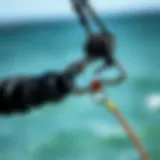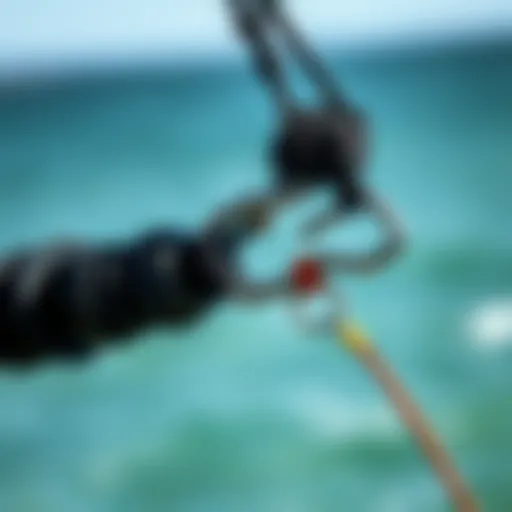The Complete Guide to Selecting a Kite for Kitesurfing


Intro
Kitesurfing has surged in popularity over the past two decades, attracting thrill-seekers and ocean lovers alike. For rookies stepping onto the scene, picking the right kite isn't just a matter of brand loyalty or flashy colors. It's about understanding the wind, the waves, and your own skill level. In this guide, we'll explore the facets of choosing a kitesurfing kite tailored for beginners, diving into types, features, safety tips, and what really makes a kite worthy of your investment.
Gear Insights
When it comes to kitesurfing, the gear you choose can make or break your experience. It’s crucial to find a kite that suits your needs without overwhelming you.
Latest Gear Reviews
Every year, manufacturers roll out new innovations. In 2023, several models stood out among newcomers. For instance, the Slingshot Rally is praised for its versatility and ease of use, ideal for beginners but capable of keeping up as skill levels rise. On the other hand, Duotone's Neo is gaining traction for its exceptional stability in gusty winds, giving new riders more control. Reviews can be found on various platforms, including forums like reddit.com where users share their firsthand experiences.
Essential Gear for Beginners
So, what should you have in your arsenal? Here’s a breakdown of necessary equipment that every beginner should consider:
- The Kite: Look for a user-friendly model with good stability and easy relaunch capabilities. A medium-sized kite generally suits beginners well.
- Control Bar: Essential for steering, choose one that fits comfortably in your hands. Safety features, like quick-release mechanisms, should be non-negotiable.
- Harness: Opt for a comfortable and supportive harness that allows freedom of movement. Waist harnesses are popular, but many find seat harnesses offer better support.
- Safety Equipment: Don't overlook a good personal flotation device and a helmet. These could save your life in tricky situations.
The best practice is to head to a local shop and try things out. Layout how each piece feels can make a big difference in your experience.
"The right gear brings confidence on the waves. Never underestimate the power of feeling comfortable with your equipment."
Techniques and Tips
Once you’ve looped in the gear, next comes the technical side. This is where the rubber meets the road, or in this case, where the kite meets the wind.
Advanced Tricks and Techniques
While this might seem a bit ahead of the game for beginners, understanding the basics of what you could achieve can be motivating. Focus on mastering the following milestones:
- Riding Upwind: A critical skill that allows you to control your path on the water. It’s about how you position your body and kite.
- Jumping: Once you've got the hang of riding, small jumps become possible. Start slow; practice pulling on the back hand to lift off the water.
Safety Practices for Kiteboarders
Safety should be at the forefront of every session. Remember these pointers:
- Know the Location: Before you hit the water, survey the beach for obstacles, currents, and where other surfers are riding.
- Wind Conditions: Always check the wind speed and direction. Avoid days with powerful gusts until you feel more at ease navigating the kite.
- Kite Control: Knowing how to depower your kite in sudden gusts can prevent accidents. Practice this skill on land to make it second nature to avoid mishaps.
For more comprehensive insights into safety practices, check out resources from www.kiteboarding.com.
As you journey through kitesurfing, remember that the process is just as rewarding as the adrenaline rush that follows. Each session serves as a learning opportunity, pushing your limits while grasping new skills that will enhance your experience.
Understanding Kitesurfing
Kitesurfing combines elements of surfing, windsurfing, and paragliding, creating a thrilling water sport that attracts adrenaline enthusiasts and leisure seekers alike. Understanding kitesurfing is essential for beginners as it serves as the foundation for enjoying this dynamic activity. Gaining insights into kitesurfing helps identify critical skills and equipment needed to safely navigate the waters. Additionally, it lays the groundwork for deeper comprehension of one’s kite performance, safety measures, and the overall experience.
Kitesurfing isn't merely about gliding across the water. It's a blend of control, strategy, and respect for nature.
What is Kitesurfing?
At its core, kitesurfing involves riding on a board while harnessed to a large kite that captures wind to propel the rider forward. This sport is about mastering the delicate interaction between wind and water. As the kite catches air, it generates lift and thrust, influencing speed and maneuverability.
The rider directs the kite using control lines attached to a bar, and the balance between the kite's power and the rider's positioning can dramatically alter the experience. Going from the beach to the open water, you’ll soon realize that kitesurfing offers both a freedom of movement and an exhilarating challenge.
Kitesurfing can be divided into various styles, such as freeride, freestyle, and wave riding. Each style showcases distinct techniques and approaches to the sport. Anyway you slice it, kitesurfing encourages a unique relationship with the elements, developing both skill and strength.
The Evolution of Kitesurfing
Kitesurfing as we know it today isn't a product of sudden development. It has evolved significantly since its inception in the late 20th century. The earliest kitesurfing concepts can be traced back to the 1970s when inventors experimented with kite-powered boards. However, it wasn’t until the 1990s and the introduction of inflatable kites that kitesurfing began to take off.
In these formative years, the design of kites drastically changed. Early kites were often tricky to control, making the sport accessible to a select few. Innovators like Cesar Rojas and others contributed to the introduction of user-friendly designs that simplified learning and made kitesurfing safer for broader audiences.
Today, kitesurfing boasts a variety of kite designs and advanced technology, catering to a wide range of skill levels and environmental conditions. The fusion of creativity and technology has transformed the sport, making it more accessible and appealing. As beginners dive into kitesurfing, they stand on the shoulders of these pioneers who paved the way for a comprehensive understanding of kites, skills, and safety measures.
"Kitesurfing is not just a sport; it is a way to embrace nature and challenge oneself against the elements."
- Anonymous
Types of Kites Available
Understanding the various types of kites is crucial for beginners venturing into kitesurfing. Each type serves a distinct purpose, designed to suit different styles of riding and conditions. Selecting the right kite can significantly impact your experience, influence learning curve, and enhance overall performance on the water. This section delves into three main varieties of kites: Foil Kites, Leading Edge Inflatable (LEI) Kites, and Delta Kites. By exploring the characteristics, benefits, and considerations of each, beginners can make informed choices aligned with their preferences and local conditions.
Foil Kites
Foil kites are a unique category that utilizes cells to capture air, creating lift. Unlike traditional kites which rely on a single, solid frame, foil kites use a series of compartments that fill with air. This design allows for lightweight and compact packing, making them a popular choice among travelers.
Benefits of Foil Kites:
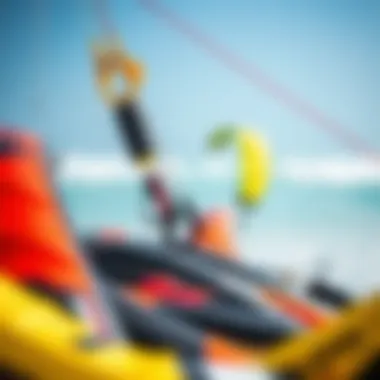
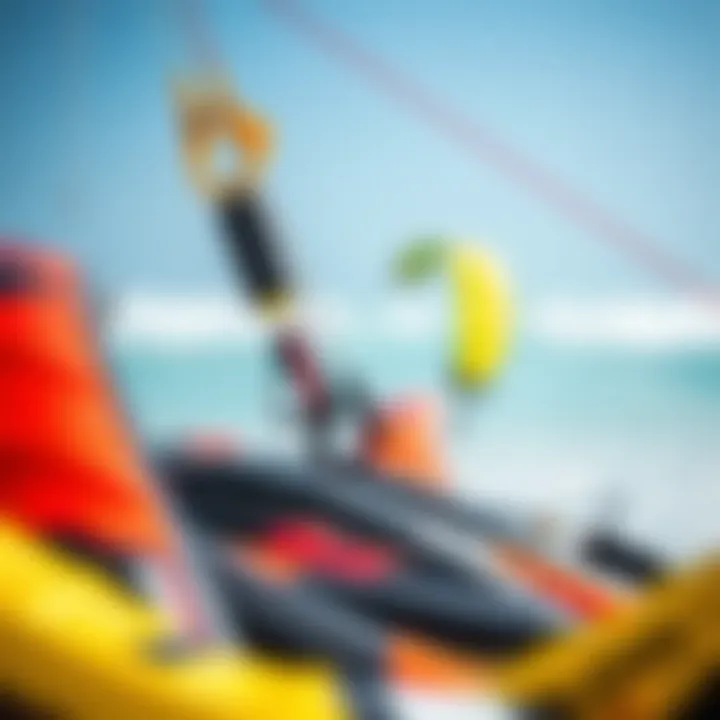
- Lightweight Design: Ideal for those who prefer a nimble kite—and they take up less space, excellent for those on the go.
- Durability: They tend to resist water, making them less susceptible to damage if the kite lands in the sea.
- Stable Performance: They often provide stable and predictable flight, which is helpful for beginners still honing their skills.
However, foil kites can have a steep learning curve when it comes to water relaunching. If you find yourself in the soup, relaunching a foil kite can be tricky due to its inherent design. Nonetheless, for the right environment and rider, they can be a fantastic option.
LEI Kites (Leading Edge Inflatable)
LEI kites are among the most popular kitesurfing options, particularly for beginners. These kites are inflated at the leading edge, forming a solid structure that enhances stability. They are available in various shapes and sizes, catering to various wind conditions and rider preferences.
Benefits of LEI Kites:
- Ease of Use: The inflatable design allows for smooth water relaunching, making them accessible for beginners.
- Robust Performance: They perform well in varied conditions, providing reliable lift and control.
- Variety of Styles: They come in different shapes, such as C-kites and bow kites, allowing riders to select according to their riding style.
Despite these advantages, new riders should be cautious about the selection of size. A kite that is too large can easily overpower a novice, while one that is too small may not generate enough lift. Finding the right balance is important for comfort and safety while you learn.
Delta Kites
Delta kites are another interesting option suited for beginners. Named for their triangular shape, these kites offer a unique blend of performance and stability. The shape helps in generating lift at lower speeds, making them particularly user-friendly.
Benefits of Delta Kites:
- Versatile Performance: They can operate efficiently in a range of wind conditions, making them a good all-round option.
- Enhanced Stability: The design tends to be more forgiving in choppy waters, helping novices maintain control.
- Easy Water Relaunch: Similar to LEI kites, Delta kites can also relaunch easily from the water, a crucial factor for those still mastering their skills.
Though they are generally a reliable choice, it's essential to remember that different deltas may have variations in performance. Therefore, it’s crucial for beginners to test different models to find the one that feels best.
"Choosing the right kite is like finding the right pair of shoes; it needs to fit your style and the conditions you plan to ride in."
In summary, understanding the types of kites available is essential for beginners in kitesurfing. Each kite has unique characteristics, advantages, and shortcomings that can significantly influence your enjoyment and safety on the water. Finding the right kite tailored to your conditions and preferences will enhance your learning experience and may even accelerate your progress. As you dive deeper into kitesurfing, the right equipment will undoubtedly make a world of difference.
Key Features for Beginners
Selecting a kitesurfing kite involves many choices, and for beginners, the right features can make or break the experience. Understanding the essential aspects can provide clarity and simplify the selection process.
One of the first elements to consider is size and its relationship to wind range. The size of the kite significantly affects how it performs in varying wind conditions. Bigger kites catch more wind, which translates into more lift and speed, making them suitable for lighter winds. However, if winds are strong, a larger kite can become overly powerful, leading to difficult and potentially dangerous situations.
To ensure a balanced ride, beginners should look for a kite that aligns well with their weight and local wind conditions. For instance, a beginner weighing around 70 kg may opt for a 12m kite for a wind range of 10-15 knots. However, in stronger winds, perhaps shifting to something smaller will help maintain control and minimize the learning curve.
"Choosing the right size kite is not just about personal preference; it’s about finding harmony with the elements."
Size and Wind Range
When starting out, beginners should familiarize themselves with the concept of wind ranges. Each kite model has a specific range of wind speeds where it performs optimally. Knowledge of these ranges is crucial for a safe and enjoyable ride.
- Low-end wind range: This is the minimum wind speed necessary for the kite to perform well. Beginners should look for kites that provide good pull even at lower wind speeds.
- Upper wind range: On the flip side, the kite must also have a handleable limit to prevent it from becoming too powerful. A kite that is too big for high winds can result in excessive speed, making it hard to control.
Also, think about steering and control features. As a beginner, you'll want a kite that offers responsive handling. Kites meant for beginners should have a balanced steering system, providing control without being overly sensitive. Kites with a frontal wing profile also promote stability and predictability during flight.
Steering and Control
Steering is vital in kitesurfing, as it directly influences how you maneuver and maintain control while navigating the water. A well-designed kite will respond quickly and predictably to steering inputs, allowing for smooth transitions and easier navigation.
When selecting a kite, beginners should also consider:
- Bar pressure: The amount of effort needed to steer the kite can affect comfort and energy during use. A kite with moderate bar pressure can help those learning to make adjustments more easily without wearing out their arms.
- Turning speed: A kite that turns slower may give a beginner more time to react when learning, while a faster-turning kite, though exhilarating, can be trickier.
So, it’s all about finding a comfortable balance between responsiveness and control, ensuring that the kite enhances the learning experience rather than complicating it.
Safety Features
Last but not least, safety is paramount in kitesurfing, especially for those just starting out. Modern kites come equipped with various safety features designed to protect riders in case of an emergency.
Key safety features to look for include:
- Safety leash systems: These help ensure that the kite detaches from the rider in critical situations, minimizing the risk of accidents.
- One-pull release mechanism: A system that allows for quick and easy depowering of the kite. In emergencies, a reliable release system allows beginners to feel safer when practicing new skills.
- Visual indicators: Bright, noticeable colors on the kite enhance visibility for both the rider and any surrounding traffic, helping prevent collisions.
Equipped with the right gear and understanding of these features, beginners can approach kitesurfing with a sense of security, setting the stage for effective learning and enjoyment on the water. Ultimately, the right kite is an investment in both safety and progress.
Tips for Selecting the Right Kite
Choosing the right kite is no small feat, especially for beginners. The world of kitesurfing can be quite overwhelming at first glance, but understanding key elements can make the process significantly smoother. Selecting the perfect kite not only influences your performance but also plays a crucial role in your safety and enjoyment on the water. This section will delve into three critical aspects to consider when picking your kite: assessing your skill level, understanding local conditions, and budgeting for the gear you’ll need.
Assessing Your Skill Level
When starting out in kitesurfing, knowing your skill level forms the backbone of your kite selection journey. If you are a total novice, you need a kite that is more forgiving and easier to handle. For instance, a beginner-friendly kite typically boasts slower speeds and offers a wide wind range, allowing you to learn without being overwhelmed.
- Newbies: If you barely know how to set up a kite, go for a larger kite with strong stability, like a larger Leading Edge Inflatable (LEI). This gives you ample time to react as you learn the ropes.
- Intermediate Riders: Perhaps you've had a few sessions and have a basic grasp of how to steer. Here, you might prefer a kite that's responsive but still maintains some safety features.
- Advanced Riders: If you’re looking to push your limits, select a smaller kite that responds quickly to your commands but also has the reliability to handle trickier conditions.
Considering Your Local Conditions
Local wind conditions significantly influence kite performance. Knowing the usual weather and water conditions where you intend to ride will inform your decision quite a bit. Riding in gusty winds or choppy waters demands a kite that's more robust.
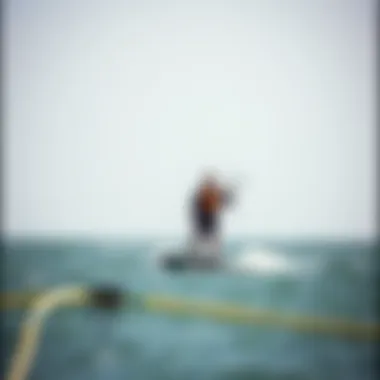
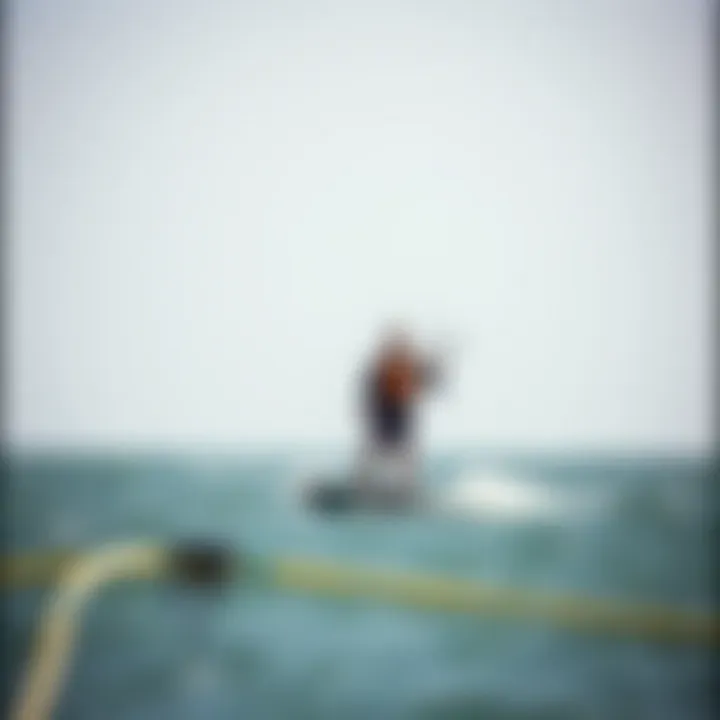
- Consistent Winds: If you’re lucky enough to live near locations with steady winds, you might want to explore smaller kites. These are usually quicker and better for high-performance riding.
- Gusty Conditions: If your local spot tends to have unpredictable winds, a larger, more stable kite might be your best bet. It can offer a smoother experience when the wind plays tricks.
- Water Surface: Flat water is more forgiving and allows for more confident riding. On the flip side, if you’re dealing with waves or chop, you might need a kite designed to handle rough conditions effectively.
Budgeting for Gear and Accessories
Let’s be honest, kitesurfing gear can put quite a dent in your wallet. Striking a balance between quality and affordability is key. Understanding your budget from the outset can save you from a headache down the line.
- New Kites: While it’s tempting to go for the shiniest new model, many reputable brands offer perfectly good kites from recent seasons that may have just one or two features that are new or trendy. You can find solid equipment without breaking the bank.
- Second-hand Gear: Don't overlook the second-hand market. Websites like Craigslist or specialized kitesurfing forums can lead you to serviceable kites. Just ensure you check for wear and tear.
- Additional Costs: Remember to factor in the costs of a kiteboard, harness, and safety equipment. These can add up, so keeping a budget in mind is crucial.
"You don’t need the latest and greatest gear to have a good time. Start with what you can afford and build from there."
Understanding these three components will help you navigate the selection process. Each choice you make regarding your kite is one step closer to enjoying the exhilarating world of kitesurfing. As you weigh your options, remember that what works for someone else may not work for you. It’s all about finding the right fit that suits your personal journey in the sport.
Safety Guidelines for Beginners
Kitesurfing is an exhilarating sport, but it’s not without its risks. Newbies must grasp the significance of safety guidelines. Ignoring these can quickly turn a fun day on the water into a hazardous situation. These guidelines are not merely suggestions; they’re your lifeline to a successful and enjoyable experience, enabling riders to focus on mastering their skills without unnecessary worries.
Understanding Wind Conditions
One of the first safety measures involves understanding the wind. Kiteboarding is precisely that—kite and boarding powered by the wind. The relationship between kite and wind can be complex, and it's critical to know how different wind conditions impact your experience. For instance, smooth, steady winds of about 12-20 knots usually provide a safe environment for beginners.
Conversely, gusty or high winds can turn a casual session into a whirlpool of trouble. An erratic wind may cause the kite to stall or react unpredictably, posing a risk to beginners unfamiliar with handling it. Here are some pointers:
- Check forecasts: Online resources like Windy or NOAA provide real-time updates.
- Local knowledge: Talk to seasoned kitesurfers about typical wind patterns.
- Choose the right time: Early mornings or late afternoons often have milder winds.
Remember, when in doubt, it’s better to postpone the session than to venture out in unsafe conditions. Your safety is of utmost importance.
Pre-flight Checks
Before you even think about taking off, conducting thorough pre-flight checks is a necessary habit to cultivate. Ensuring all gear is spick and span can prevent minor issues from mushrooming into significant dangers later on. Here’s a checklist to keep in mind:
- Kite integrity: Look for any tears, rips, or worn areas on the canopy.
- Lines and connections: Inspect the lines for fraying and ensure connections are secure.
- Safety release systems: Know how to operate them. Familiarity can mean the difference between safe landings and potential catastrophe.
Performing these checks can feel tedious, but trust me, it’s akin to a pilot going through checklists before takeoff—essential. You wouldn't want to find yourself battling a malfunction after launching your kite!
Emergency Procedures
Even the best-laid plans can hit snags. Understanding emergency procedures is vital to navigating potential mishaps. Here are some essential actions you should familiarize yourself with:
- Self-landing: Practice how to land your kite safely. Finding an open space to relax your kite where it won't snag on anything is key.
- Signal assistance: Develop hand signals with friends for effective communication if things go awry.
- Learn to swim: Admittedly an obvious one, but knowing your buoyancy and swimming skills can give you peace of mind.
Prior planning keeps you prepared. As they say, “better safe than sorry.” In kitesurfing, these safety measures provide the framework for a rewarding experience rather than a stressful ordeal. Ensuring that you take them seriously from the get-go not only fosters personal safety but also cultivates a better kitesurfing community.
"An ounce of prevention is worth a pound of cure."
This age-old wisdom rings particularly true in kitesurfing, where being proactive can prevent accidents and ensure your time spent riding the waves is enjoyable.
Learning the Basics
Getting a solid foundation in kitesurfing is like learning to ride a bike—it might feel challenging at first, but once you get it, you’re cruising. In this section, we emphasize the importance of understanding essential kitesurfing techniques. Mastering the basics not only boosts your confidence but ensures safety on the water. Moreover, new kiteboarders often find that knowing the fundamentals allows them to make the most of their gear, enhancing every session spent on the water.
Fundamental Techniques
For any kitesurfer, a grasp of fundamental techniques is non-negotiable. You need to get the feel of flying the kite before you even think about hitting the waves or pulling off tricks. This includes:
- Launching and Landing: Know how to efficiently and safely get your kite in and out of the air. Coordination with a buddy can really come in handy here since most injuries happen during these stages.
- Basic Kite Control: Understanding how to steer your kite and navigate its power zone is critical. The kite acts like a variable throttle, propelling you across the water, so get comfortable just flying it around—practice is key.
You’ll often hear instructors stress that control is king. The better you can handle your kite, the less likely you are to find yourself in a compromising position.
Handling the Kite
Handling your kite is all about finesse and awareness. You must adapt to the wind conditions and understand how your kite interacts with them. Key points include:
- Wind Understanding: Each session presents distinct wind patterns. Windsurfing experts recommend observing flags and trees to gauge wind strength before launching your kite. Strong gusts can turn even the best kite surfer into a tumbleweed.
- Using the Trim Line: Adjusting your kite’s trim line helps manage lift and power. Pulling in the trim reduces the kite’s angle, increasing control, which is particularly handy in choppy waters.
Most importantly, practice handling your kite frequently. Even experienced riders often return to the basics to refine their skills.
Riding Techniques
Riding is the ultimate goal, but jumping in too soon can lead to frustrations. Taking time to understand how to ride properly can make the experience enjoyable. Here are some areas to consider:
- Start with Body Dragging: Getting comfortable with the feeling of being pulled by your kite without a board is essential. It builds confidence and helps you refine your kite control.
- Getting Up on the Board: Carefully practice transitioning from body dragging to getting on the board. The key here is ensuring your kite works with you rather than against you.
"Beginner kiteboarders should focus on smooth transitions rather than attempting tricks straight off the bat. It leads to faster progress and a more enjoyable experience."
Ultimately, your time spent learning these basics will increase your enjoyment on the water, help prevent accidents, and leave you eager to explore everything kitesurfing has to offer.
For further resources on kitesurfing basics, check out instructional videos on YouTube or subscribe to kitesurfing forums on sites like reddit.com.
Understanding Kiteboard Pairing
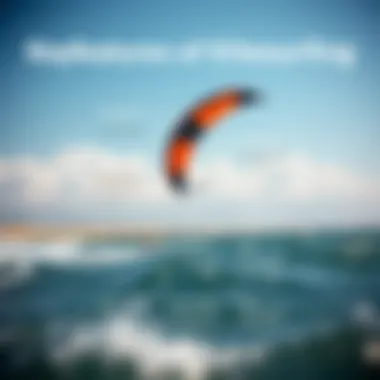
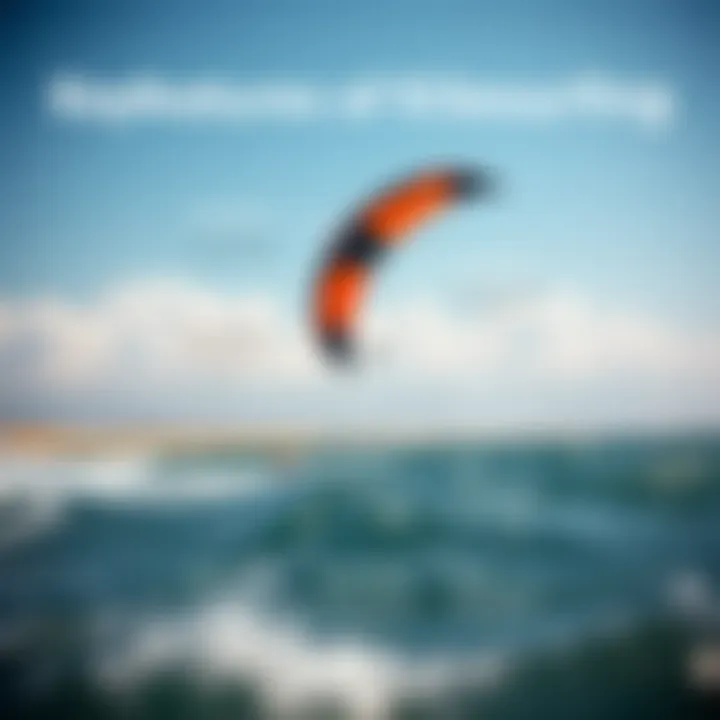
Picking the right kiteboard is crucial for a successful kitesurfing experience. This section outlines why understanding this pairing is key for beginners, enhancing both performance and safety while riding the waves. A well-matched kite and board can spell the difference between a smooth ride or an unruly tumble into the water.
The connection between the kite and board plays a significant role in how a rider engages with the wind and water. It can dictate stability, speed, and even the ease of tricks as one progresses in the sport. Ultimately, understanding how these elements interact lets newcomers make informed choices that heighten the enjoyment of kitesurfing.
- Performance: A correct kiteboard choice improves responsiveness. It's like steering a well-fitted car compared to driving a clunky old beat-up model.
- Safety: When gears click together nicely, it reduces the risk of mishaps. A kite that pulls well with a board can aid in smoother landings, and that’s a must for anyone starting out.
Board Types for Beginners
When it comes to kiteboards for beginners, several options stand out, each bringing its own unique benefits to the table. Here are the primary types that aspiring kitesurfers should consider:
- Twin-Tip Boards: These are perhaps the most versatile and common boards among beginners. With the same design on both ends, they allow for easy riding both directions. This means less hassle when you wipe out—just turn around and go again.
- Directional Boards: Ideal for those aiming at more surf-like experiences, directional boards are shaped for one specific direction. They can offer greater performance when mastering waves but require a bit more skill to control.
- Wakestyle Boards: For learners interested in jumping and tricks, wakestyle boards provide a good mix of stability and performance. But be warned, they might be too advanced for absolute beginners.
Each of these board types affects how the kite interacts with the water, so picking the right one is essential.
Matching the Kite and Board
Getting the kite and board to work well together can sometimes feel like piecing together a puzzle. The compatibility impacts various factors, including wind conditions, rider weight, and skill level. Here’s what you must consider:
- Size Matters: Most importantly, the size of the kite should be proportionate to the board. A larger board may need a bigger kite to generate enough pull, while a smaller board can be paired with a smaller kite to maintain control.
- Wind Conditions: Understanding how your chosen kite and board work under different wind scenarios is vital. A small kite with a large board in low wind may leave you floundering without enough power.
- Rider Weight: Your own weight influences how each board and kite combination reacts to the wind. Lighter riders can often use smaller kites to achieve the same performance as heavier individuals using larger ones.
"A good kiteboard pairing comes down to understanding how each piece of gear works in tandem, harnessing the wind's energy to create a joyful ride."
For further reading and deeper insights into kitesurfing gear, check out Wikipedia and forums on Reddit. Learning from others' experiences can sometimes be the key to mastering this exhilarating sport.
Gear Maintenance and Care
Maintaining your kitesurfing gear is crucial for ensuring both the lifespan of your equipment and your safety on the water. A well-cared-for kite not only performs better but also reduces the risk of accidents resulting from equipment failure. Regular maintenance ensures that all components of the kite function as they should, contributing to an enjoyable and safe kitesurfing experience.
Proper Storage Techniques
Proper storage of your kite gear can dramatically influence its durability. Here are a few important tips:
- Avoid Direct Sunlight: When storing your kites, make sure to keep them in a cool, dark place. Prolonged exposure to sunlight can weaken the fabric and degrade the materials over time.
- Dry Before Storing: Always ensure your kite is completely dry before packing it away. Storing a wet kite can lead to mold and mildew, which are not only unsightly but can also damage the materials.
- Use a Kite Bag: Most kites come with a specific bag designed for storage. Using it helps keep everything together and protected from dirt and debris.
- Keep Lines Untangled: Make sure your lines are not tangled or knotted when you store them. Wrapping them neatly around your hands or using a line spool helps maintain their integrity.
Storing your gear properly protects your investments and can save you from unnecessary costly repairs down the line.
Routine Inspections
Regular inspections are key to identifying potential issues before they become problems. Here’s what to look for:
- Check for Leaks: If you have an inflatable kite, look closely for any signs of leaks or punctures. A quick repair can keep your kite flying smoothly, while ignoring small flaws can lead to bigger headaches.
- Inspect the Bridal Lines: Ensure that the bridal lines are not frayed or damaged. They play a critical role in the kite's performance. Any imperfections could affect steering and control, which may result in accidents.
- Look for Wear and Tear: Check the canopy for any signs of wear, tears, or fading. Addressing these issues early can prolong the life of your gear.
- Review Safety Features: Make sure that all safety features, such as release mechanisms, are functioning correctly. Familiarity with these systems can save your life in emergencies.
Routine inspections help you catch small issues before they cause more significant problems, keeping you safe and ensuring your gear lasts longer.
"Taking the time to maintain and care for your kitesurfing gear is not just about enhancing performance—it's about ensuring your adventures continue safely and effectively."
For more information on gear care, check resources at Wikipedia or join the community discussions on Reddit where experienced kitesurfers share their insights.
Resources for Continued Learning
The path to mastering kitesurfing doesn’t end with snagging your first kite. In fact, it’s just the tip of the iceberg. Resources for continued learning play a vital role in sharpening your skills and broadening your knowledge in this exhilarating sport. Whether you find yourself stuck in the shallows or ready to push your limits, staying informed and connected can significantly enhance your experience on the water.
Instructional Videos and Online Courses
In this digital age, online resources have burgeoned, offering an array of instructional videos and courses tailored for both beginners and seasoned kite surfers. These platforms provide a plethora of insights, ranging from foundational techniques to advanced maneuvers.
- YouTube: Channels led by experienced kitesurfers often post tutorials that cover everything from kite setup to riding techniques. A simple search will reveal countless videos where you can visually learn and grasp concepts that could otherwise be challenging to explain in text.
- Dedicated Online Courses: Websites like Udemy and KiteLand, or platforms like www.kitesurfingcourses.com, offer structured courses. These often come with step-by-step instructions, interactive activities, and the bonus of being able to learn at your own pace.
- Apps: Some smartphone applications tailored for kitesurfing allow for on-the-go learning. They provide video demonstrations and tips that you can reference right before heading out. For instance, the app "KiteSnap" offers a community-focused approach, allowing users to share videos and insights.
With these resources at your fingertips, you can continually refine your skills, keeping them sharp and relevant amidst ever-evolving techniques.
Local Kiteboarding Schools and Communities
Engagement with local kiteboarding schools and communities serves as another cornerstone for continual growth. Learning in the field, under the watchful eye of certified instructors, allows for immediate feedback and a diverse array of experiences. Here are some key elements to consider:
- Expert Guidance: Getting hands-on instruction is invaluable. Local schools often have seasoned instructors who understand the nuances of the area’s wind conditions and can offer tailored advice that online resources may not provide.
- Community Support: Being part of a kitesurfing community allows you to connect with fellow enthusiasts who can share tips, organize meet-ups, and even lend equipment. This camaraderie can really boost your confidence as you try new techniques or explore different locations.
- Events and Competitions: Many kiteboarding schools host local competitions, workshops, or demo days. Participating in these activities not only hones your skills but also integrates you into the broader kitesurfing community, fostering connections that may last a lifetime.
The End
Choosing the right kitesurfing kite is not just a matter of picking a color or a brand, it's a pivotal decision that directly impacts your whole kitesurfing experience. This article has covered essential elements that every beginner needs to consider, such as the types of kites available, their features, safety protocols, and guidelines for effective gear maintenance. A novice might feel overwhelmed with the abundance of options and information, but understanding the core components can simplify the selection process.
To recap, the crucial aspects involve assessing your personal skill level, local wind conditions, and budget. Each kite type, from foil kites to delta kites, offers distinct advantages in different environments. Moreover, safety is not just a checklist item; it's a continuous commitment to maintaining your gear and being informed about wind conditions and emergency procedures. By internalizing these elements, beginners can make choices that not only enhance their performance but also ensure a safer and more enjoyable ride.
"Before diving into kitesurfing, take time to reflect on your individual needs and local conditions. A well-informed decision can lead to smoother learning experiences."
In essence, this guide aims to arm you with valuable insights that facilitate a more enjoyable and enriching kitesurfing experience. As you pick your first kite, remember that every session on the water builds your skills and confidence.
Recap of Key Points
- Understand Kite Types: Foil kites, LEI kites, and delta kites each serve specific purposes and conditions. Knowing which one aligns with your goals is key.
- Importance of Safety: Always check wind conditions and perform pre-flight checks. Familiarize yourself with emergency procedures to ensure a safe environment.
- Assess Personal Needs: Your skill level, local conditions, and available budget are essential in selecting the appropriate kite and gear.
Encouragement for Beginners
Starting your kitesurfing journey might feel daunting at first, but remember that every expert was once a beginner. Embracing patience and persistence pays off. As you step into the adventure, commit to learning and evolving. Engage with your local kitesurfing community, seek lessons, and don’t hesitate to ask questions. They're there to support you, helping turn initial fears into thrills.
Your determined spirit will carry you through rough patches and thrilling rides alike. So grab your chosen kite, hit the water, and let the wind guide you toward an exhilarating experience that broadens your horizons beyond the shore.














